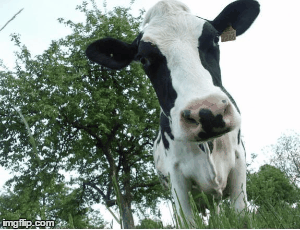*To learn more about participation in a interest based community, also known as an affinity space, for my Games and Learning masters class, I have joined the a fantasy football discussion community and am blogging about the experience.

My affinity space at FFToday is holding a contest for members to choose the first ten draft picks in the upcoming NFL draft being held on April 27th. I have decided as part of my continuing participation in the affinity space I will enter this contest.
One of my goals, as a fantasy football player, in joining the FFToday affinity space was to develop my skills as an evaluator of the rookies entering the NFL though the draft. In my younger and less responsible days I would regularly watch NFL on Sundays and college football on Saturdays, filling my weekends with the sport. By regularly watching the college level of football I had first hand knowledge of the players that would be newest members of the NFL. Eventually I realized that weekends were for more than watching football, and paired my viewing down to just those games on Sunday. This has left me without my first hand impressions of college players, however, and for fantasy purposes I have been forced to rely on the sports media for evaluations of the potential rookies. By joining the FFToday community I have layered my access to rookie player research to include the evaluations made by FFToday community members, some with first hand familiarity to these players.
These rookie evaluations have helped me think about rookies to target in my fantasy draft but when predicting the first ten draft picks this is not the whole picture. In fantasy football an athlete’s talent is only half the equation in the decision making process. Just as important is the player’s team and his position on that team’s depth chart. Because the team and his depth chart position lets the fantasy football manager have a better understanding of the player’s opportunity to be successful, a player can have all the talent in the world but if the supporting players on his team don’t produce then the player will suffer, also if a player is young and is sitting on the bench behind an established veteran, the rookie’s playing time will be limited and that will negatively affect his production. The upcoming draft will shed a lot of light on the the situations these rookies will be thrown into for training camp.
The skill needed for FFtoday’s draft contest is matching the talent of top prospects with the needs of the teams that are picking in positions 1-10. I started my planning for my entry by looking at the recaps of the 2016 seasons for the teams with a top ten pick. Knowing how a team’s season played out gives insight into areas of need that a team will likely try to address in the draft, with the bigger the need the earlier in the draft it will probably be addressed. I decided to lean on the recaps from ProFootballFocus, because I trust their analytical approach to evaluating teams and players. The teams with top ten picks are:
- Cleveland Browns
- San Francisco 49ers
- Chicago Bears
- Jacksonville Jaguars
- Tennessee Titans
- New York Jets
- LA Chargers
- Carolina Panthers
- Cincinnati Bengals
- Buffalo Bills
With knowledge of the draft order, team situations and what I learned from the collected wisdom of the FFToday affinity space I selected my entry for the first ten NFL draft pick for the contest. My choices were as follows:
- Myles Garrett (DE – Texas A&M)
- Solomon Thomas (DL – Stanford)
- Cam Robinson (OT – Alabama)
- Marshon Lattimore (CB – Ohio State)
- Jamal Adams (S – LSU)
- Malik Hooker (S – Ohio State)
- Mike Williams (WR – Clemson)
- Leonard Fournette (RB – LSU)
- Reuben Foster (ILB – Alabama)
- O.J. Howard (TE – Alabama)
Now that I have entered my picks I just need to to wait for April 27th, to see if my rookie research and my analysis of team needs have paid off.

 s a researcher at
s a researcher at 